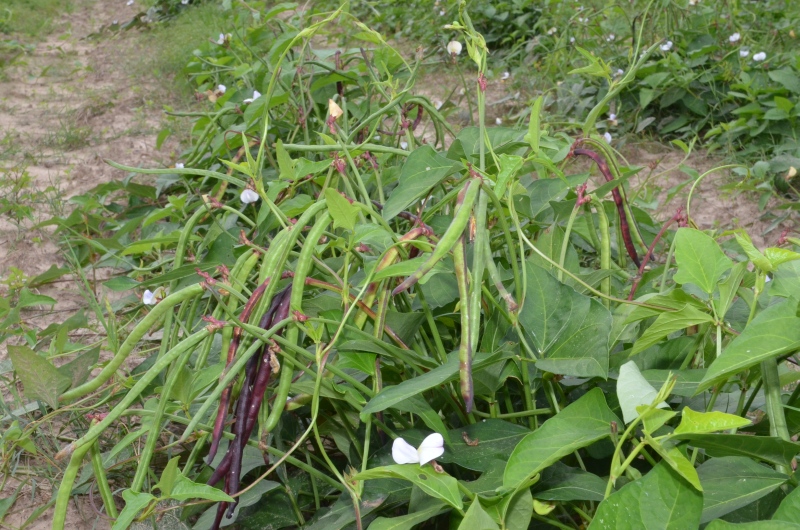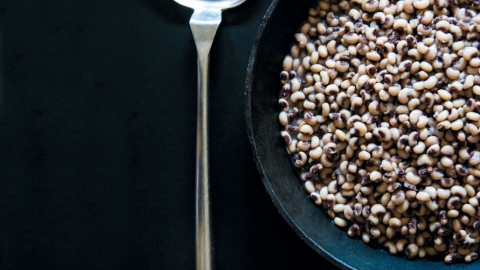Pea is for Potlikker
PEA IS FOR POTLIKKER
After their pink-eyed green orbs turn dark brown and infuse the dish with a superior dark, earthy potlikker* perfectly paired with hot cornbread, the purple hull pea tastes miles from its humble origins as a forage food for livestock. The more common, but less flavorful, black-eyed pea is shunned by most in the Shankleville community of Deep East Texas. It’s the purple hull pea that rises to the top of the list for most Southern cooks.
Considered the creamiest variety in this family of legumes, this pea, like the black-eyed pea, is believed by some to have first come to America from Africa with the slave trade. Both types stand up in summer heat and poor soil, a protein for the lower classes. Though Texas does not have near as many micro-regional preferences in the cow pea family as its Southern neighbor states, there certainly is a variety to be found in markets beyond just the purple hull and black-eyed pea. There’s Texas Cream, Crowder and Texas Pinkeye, alongside the Pinkeye Purple Hull, to name a few.
There is a tale some folklorists tell that after troops from the North destroyed Southern crops, black-eyed peas were all that were left in the field to eat because the others were found to be tastier. So for many Southerners, the black-eyed pea became a traditional New Year’s Day dish. The most traditional way to eat either is Potlikker Soup: cooked with ham hocks and served with braised greens and hot cornbread. But finding purple hull peas at a local farmers market is a lot like finding a pot of gold for those who were raised on their taste. If there are certain essential flavors of summer to put up in the freezer, this gem of the garden is one of them.
*Potlikker (derived from pot liquor) is the broth left in the pot from cooking greens (such as collards), often sopped up with cornbread or biscuits and devoured, a Southern food tradition.








